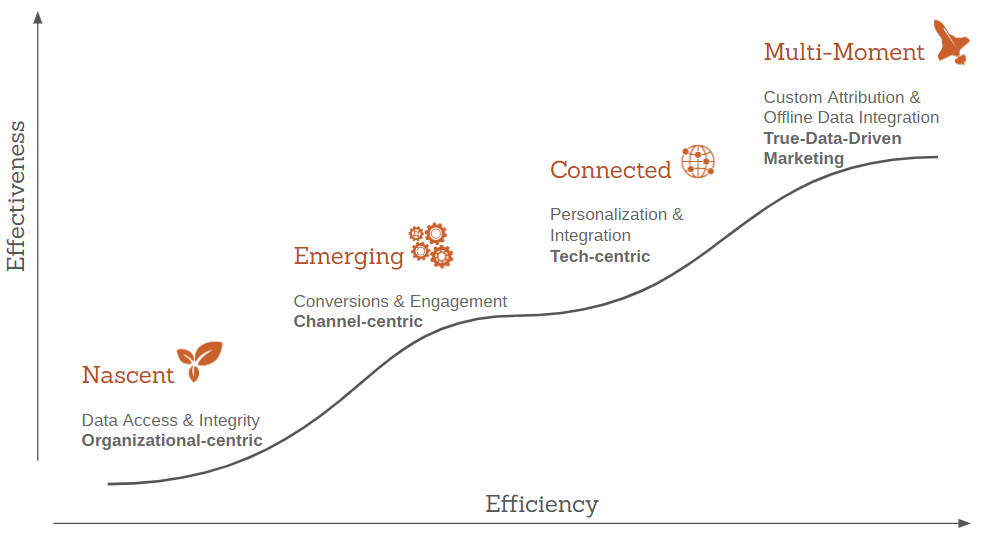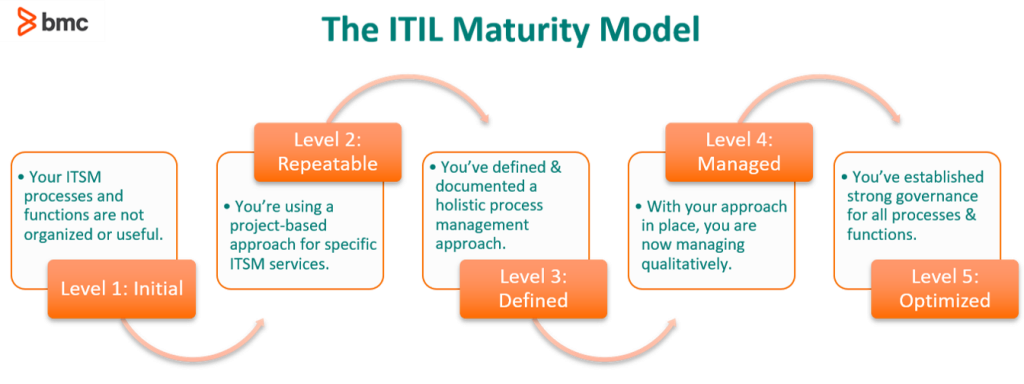Digital transformation is a game changer. Digital transformation drives new business opportunities and operational efficiencies that were previously bottlenecked by traditional ways of conducting routine business tasks.
Digital technologies have empowered organizations to redefine the way they operate, but that hinges on the level of your digital maturity.
To undertake the best digital transformation initiatives, you must first understand your digital maturity. That’s why companies and organizations use a framework known as digital maturity models.
What is a digital maturity model?
A digital maturity model is a framework that allows you to:
- Develop a roadmap for your digital transformation journey
- Understand your digital maturity level at any given moment
Market forces encourage organizations to adapt their business operations, but the complexity of a transformation project, relative to the state of digital maturity, is not consistent.
Before you can move forward in your digital transformation journey, it’s important to understand where you stand now. With this information, you can make the right decisions to survive the digital world—and make the most of it.
Examples of DMMs
A variety of digital maturity models are available—there’s not one authoritative model. Here’s the DMM framework developed by Google and BCG:

(Source)
Google’s Digital Maturity Model has four stages that focus on marketing and sales efforts. However, other data-driven digital capabilities and processes can also follow this model.
For example, Gartner has an AI maturity model and ITIL® developed a maturity model for service management capabilities:

Stages in a digital maturity model
In any maturity model, the path of progression is not linear and the stages can hold different meanings to each business organization. In general, we can describe these stages as follows.
Nascent
The early stage in digital maturity, focused on using data quality and connecting the data silos between organizational departments.
In this stage, the lack of trust in data is apparent and departments struggle to collaborate. Strong executive buy-in and stakeholder engagement is crucial to progress from this stage.
Emerging
Organizational departments are more connected, using the improved data quality to test and improve on new digital technology deployments. In this stage, the emphasis is on improving experience and tech-driven processes that are now more documented and scalable across departments.
Connected
In this stage, data-driven business processes translate directly into revenue generation and improvements in productivity. Here’s some common markers of this stage:
- Companies are able to connect online and offline data, linking digital transformation efforts to profit and sales opportunities.
- IT is focused on technology platforms and activating the resulting business opportunities.
- Cross-functional collaboration is well established. Everyone speaks the same language and identifies common goals pertaining to digital and data technologies.
Multi-Moment
At the final stage, organizations pursue incremental efficiencies with data-driven insights. Multiple channels have emerged as established means of delivering operational efficiencies and organizations optimize dynamic execution across these channels. These channels are not limited to marketing and sales but also apply to IT services, creative, development and security, among others.
Understanding maturity gaps
Once you’ve identified your state of maturity, focus on understanding how specific improvements can fill the existing gaps in maturity.
Deloitte Consulting provides an approach to move from evaluating your digital maturity levels to determining actions that move your digital transformation journey in the right direction. Their Digital Maturity Model improvement framework is described in the following stages:
Imagine
Identify ambitions, explore opportunities, and target a vision for the future through the following steps:
- Define strategy. What is the primary focus of the business?
- Ignite Innovation. Embed new ideas and creativity as tools to develop strategies for improving business processes.
- Gain insights. Use data-driven insights from real-world marketing and customer experiences to validate ideas and strategies.
Deliver
Take action, find useful learnings, and prioritize capabilities. Improve the concepts and plans for digital transformation before applying it at scale. Use the following steps:
- Create experiences. Architect unique customer experiences for each digital medium.
- Reinvent the core. Optimize digital experiences for improved results.
- Lead the change. Take bold steps in disrupting the competition, even if it requires transforming the design of your organization.
Run
Implement the chosen action plan. Realize the gains at scale, leaving provision for continual improvements and growth. Evaluate the progress through and carry out the following steps:
- Build platforms. Use an integrated set of marketing, cloud, security, and business technologies to enable end-to-end digital transformation.
- Secure cyber. Focus on cyber defense and risk mitigation capabilities.
- Sustain and optimize. Improve continuously. Sustain the transformation and business agility that comes with digital technologies.
Maturity for transformation strategy
A strategic approach to digital transformation requires you to understand your digital maturity. The barriers to digital entry are shrinking and new technology companies are providing a variety of IT services and capabilities to enable digital transformation. Similarly, organizations increasingly need to improve quality and reliability of their digital information and technologies.
By improving your digital maturity, business organizations can prepare for the disruptions set to occur due to the prevalence of digital trends and improving transformation capabilities of their competitors.







